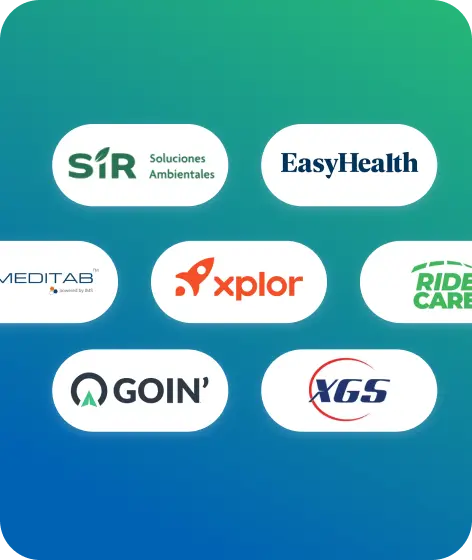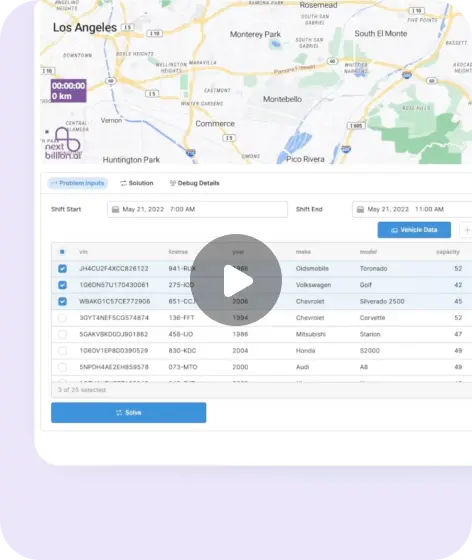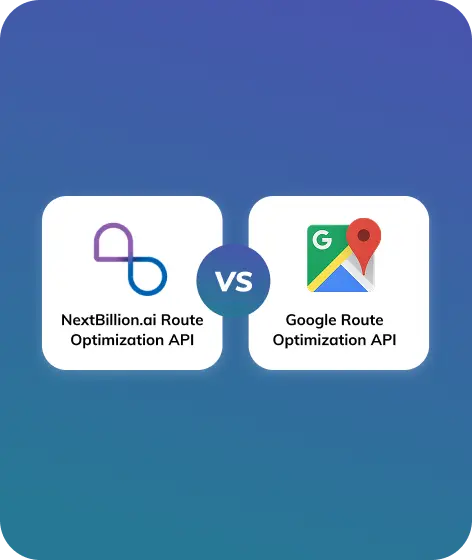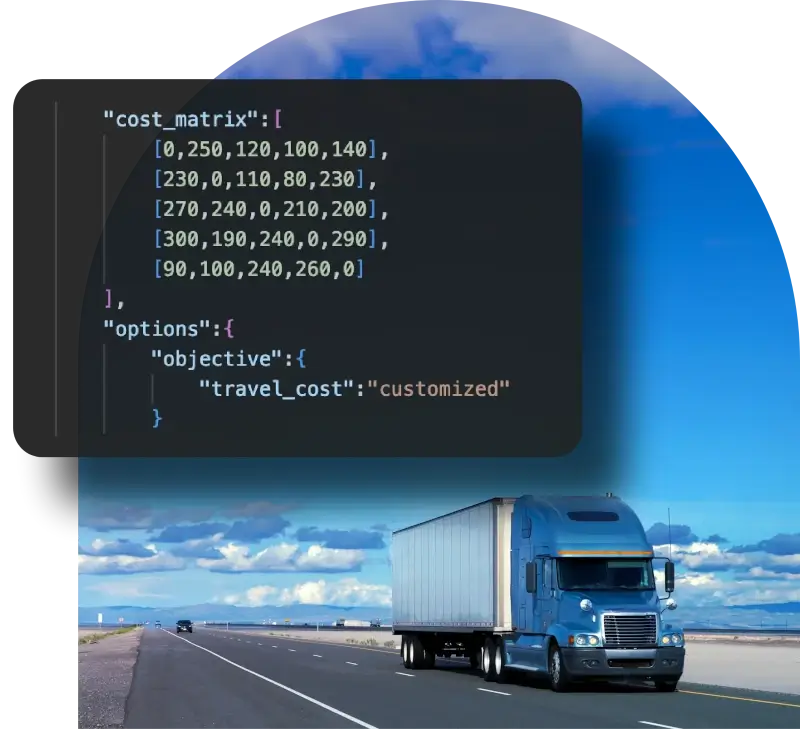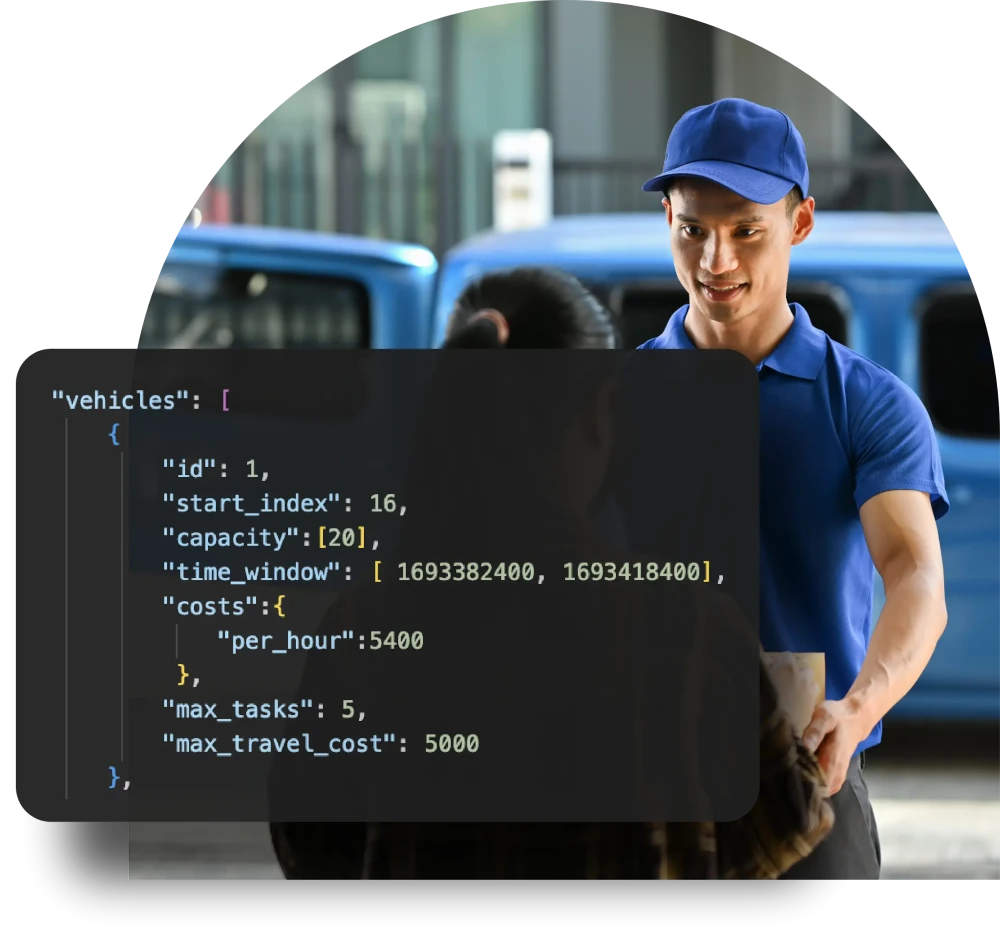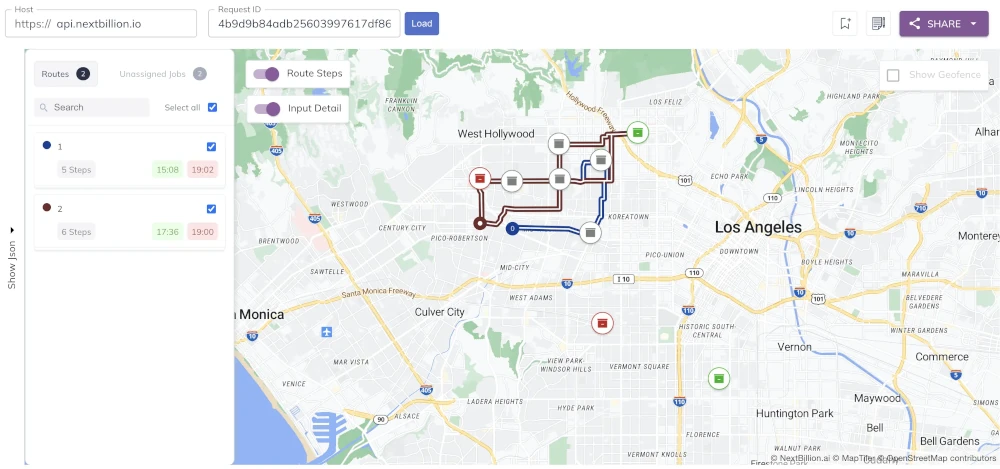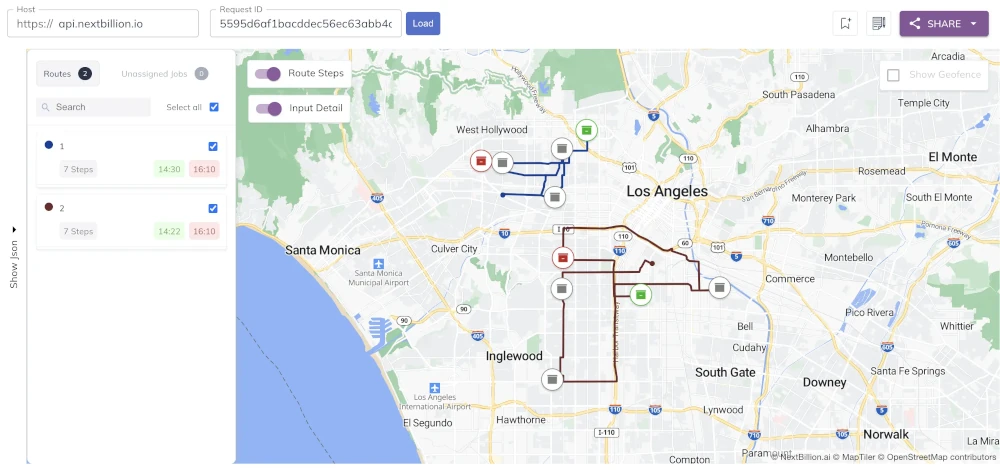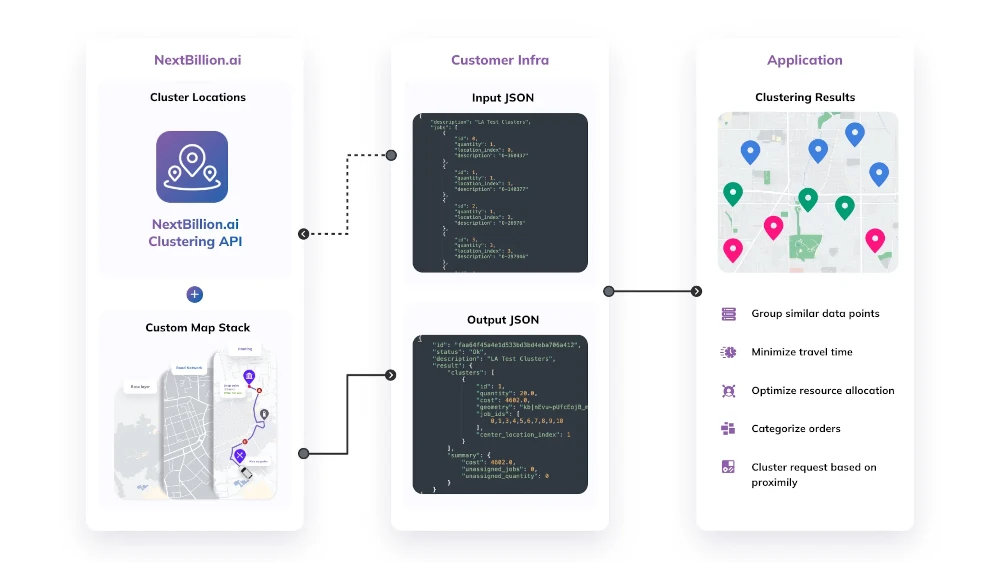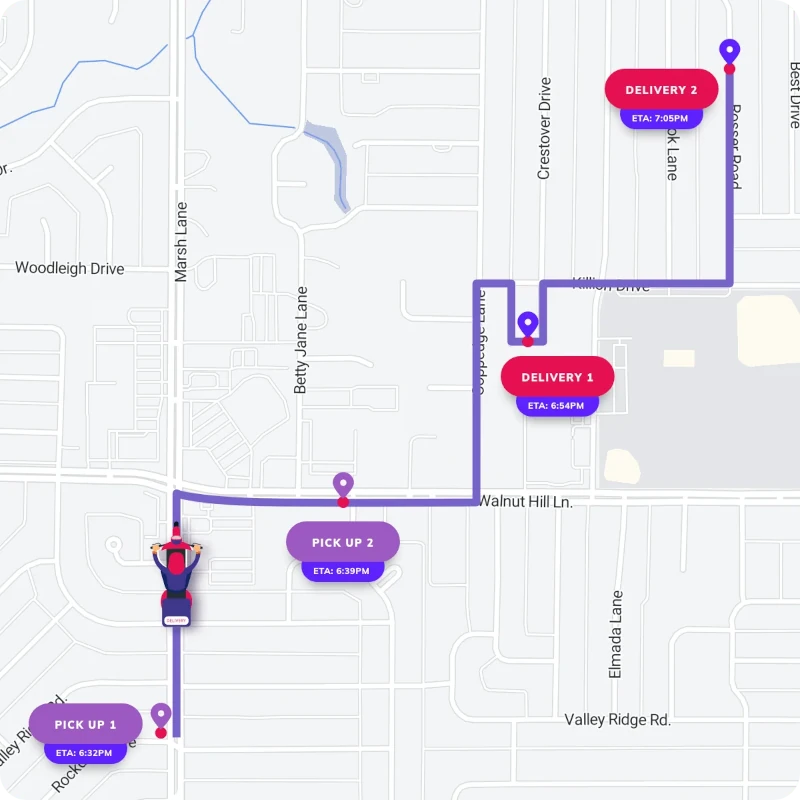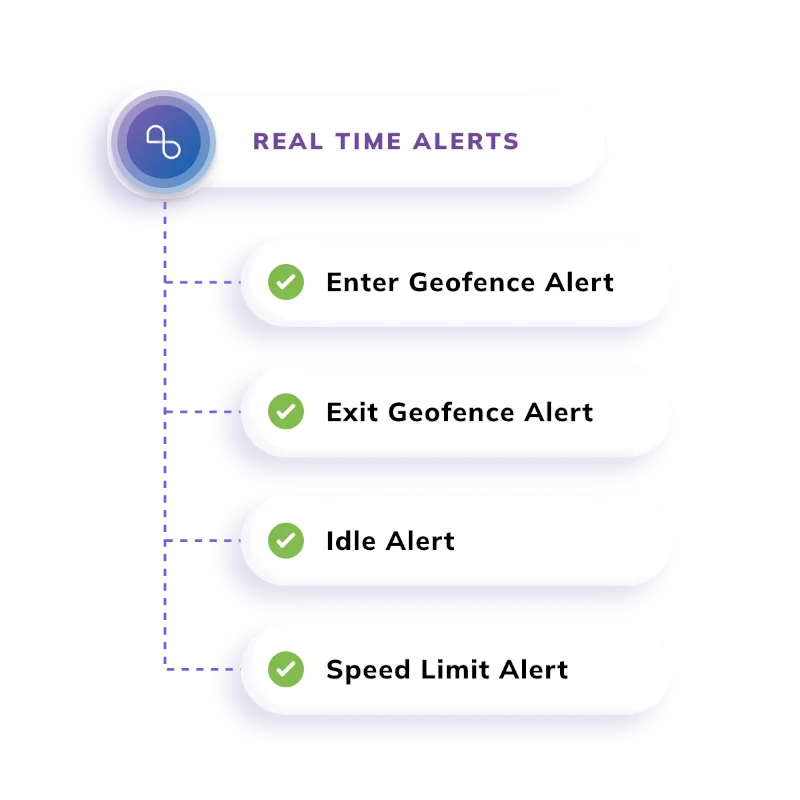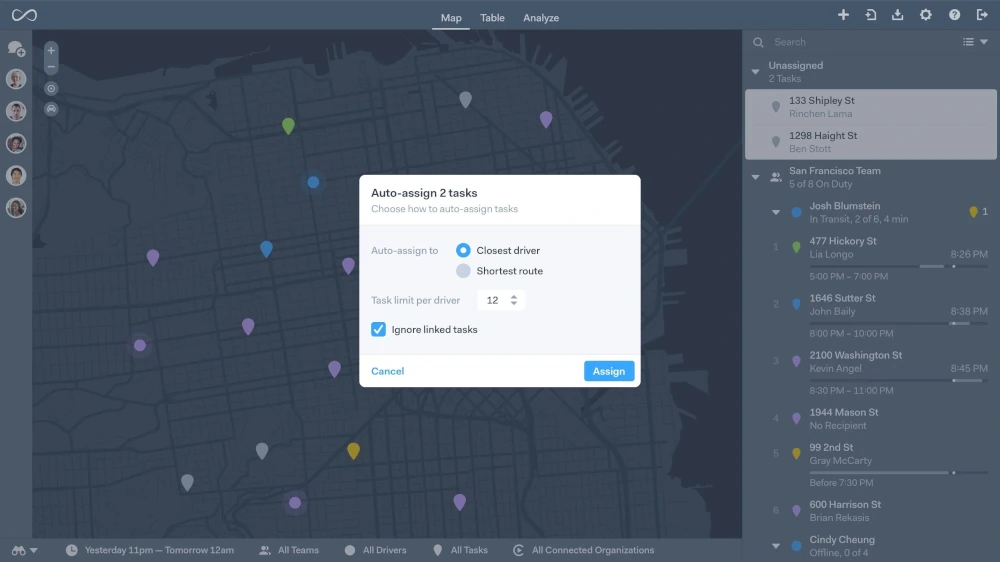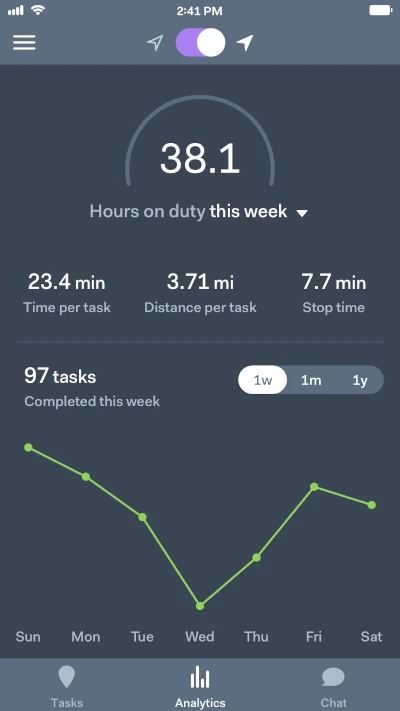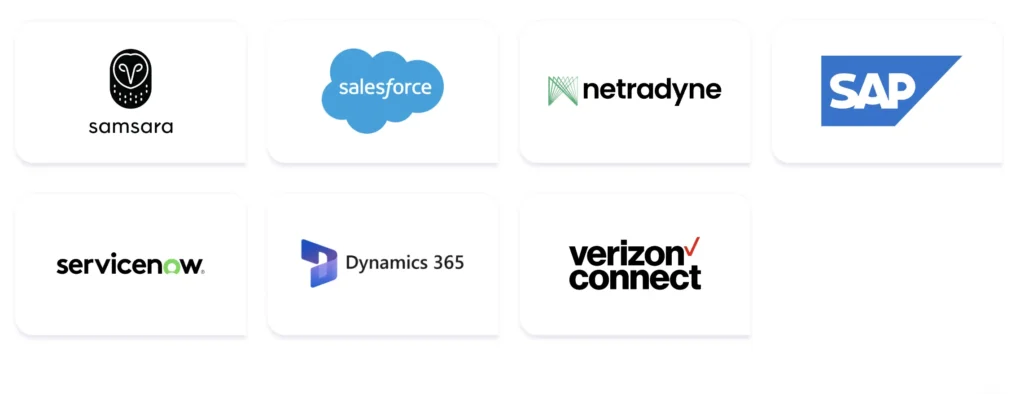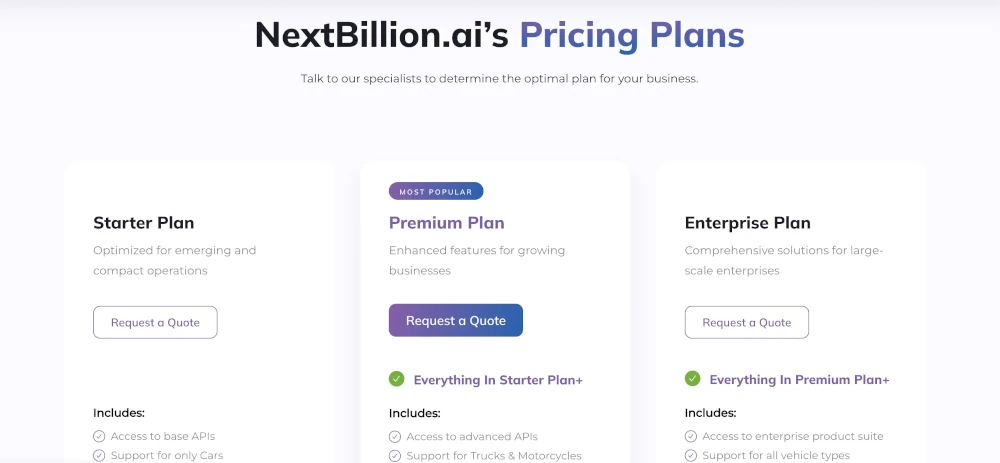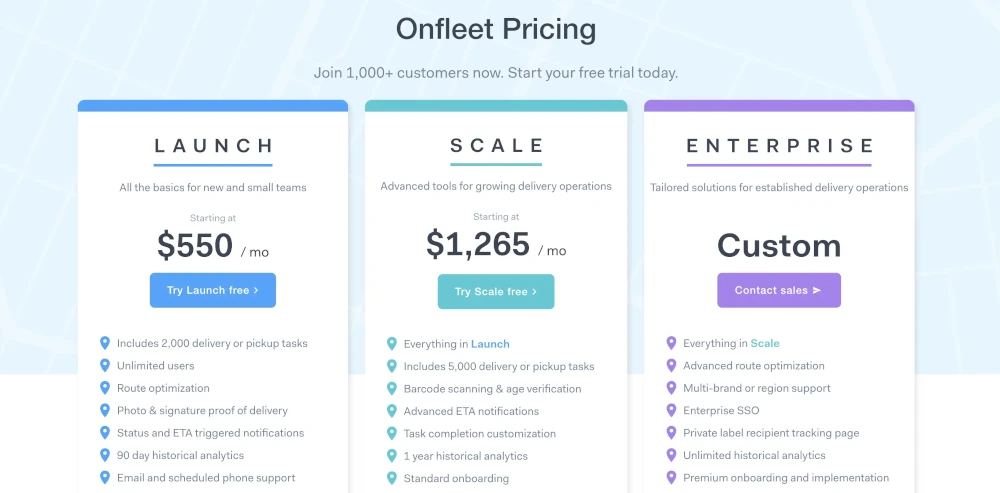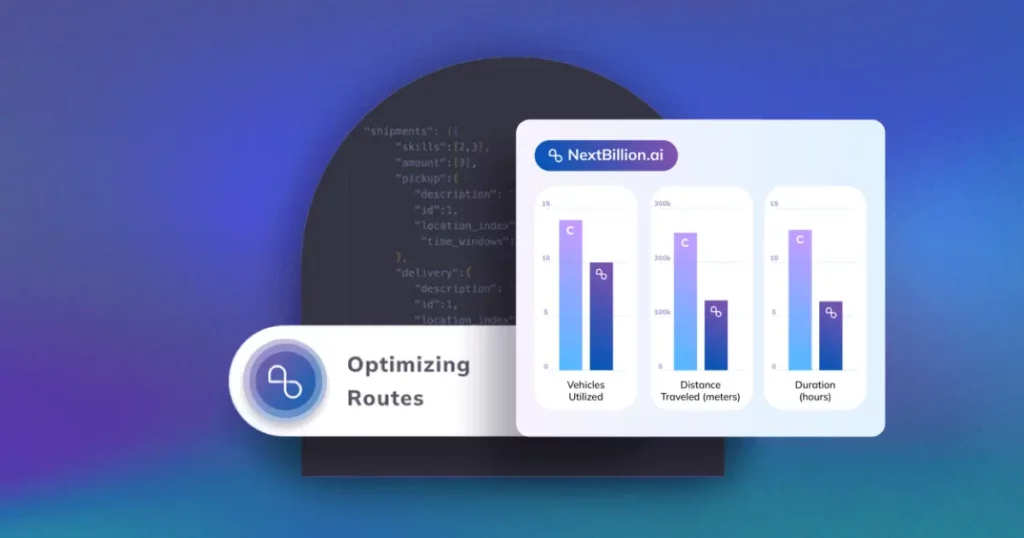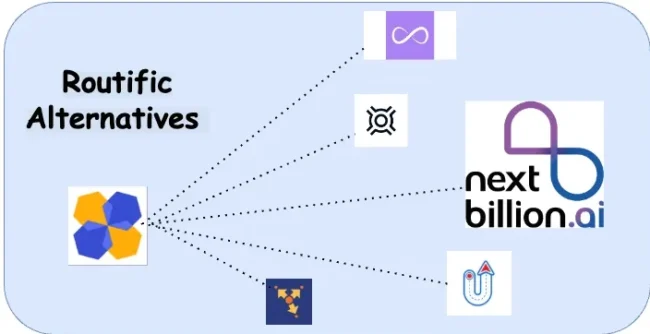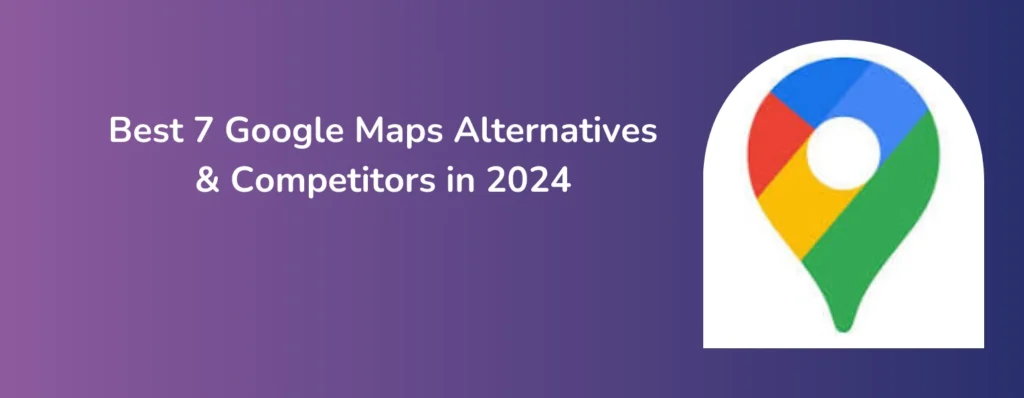Onfleet, Bringg, and NextBillion.ai are some of the best companies in the delivery management field today. Each platform boasts unique strengths and innovative solutions designed to streamline operations, enhance customer satisfaction, and drive business growth.
But which one stands out as the best choice for 2025? In this article, I’ll compare Onfleet, Bringg, and NextBillion.ai based on their features, benefits, and potential drawbacks to help you make an informed decision about your delivery management needs.
Onfleet vs. Bringg vs. NextBillion.ai Features
In this section, I’ll be covering the features and capabilities of Onfleet, Bringg and NextBillion.ai in detail. This will help you understand each tool’s offering comprehensively, enabling you to make a smart choice.
NextBillion.ai Features
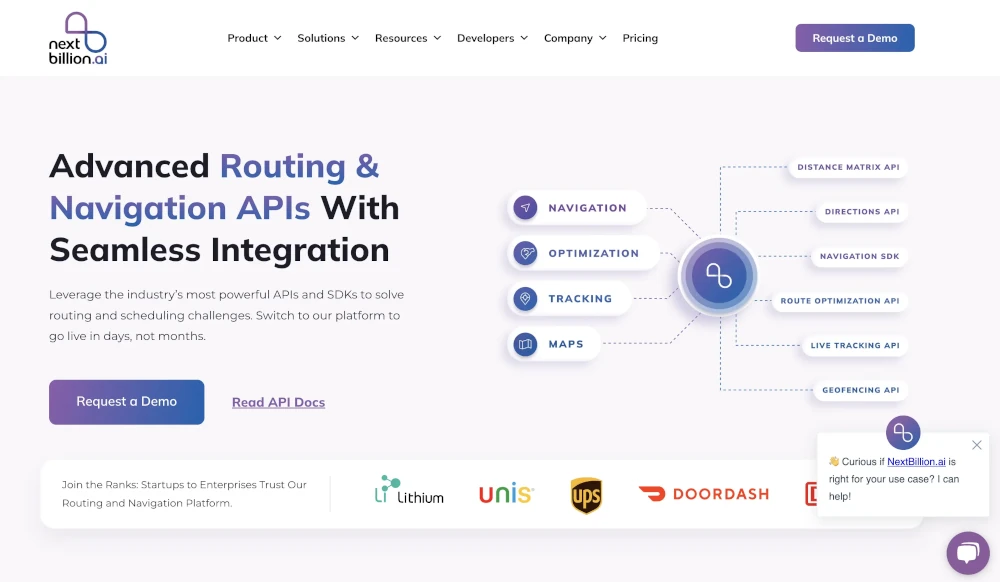
NextBillion.ai is an AI-based API and SDK first SaaS company that caters to diverse industries of all sizes with their mapping and location tech products. It offers numerous advanced features that can transform your delivery operations.
Some of the features are:
Feature 1: Advanced Route Optimization
NextBillion.ai’s Route Optimization API is designed to create the most efficient delivery routes tailored to your fleet and operational needs.
The API allows businesses to generate optimal delivery routes by considering various factors such as zone-based allocation, multiple vehicle profiles, and custom cost matrices.
Users can input specific parameters for each vehicle, including size, capacity, and operational costs, to ensure the routes are cost-effective and time-efficient.
After setting this input parameter, you can send it to the Optimization Engine, which will generate a unique job ID for the routing scenarios. This job-id can be used to get optimized routes.
You can visually analyze these routes using the Route Planner Tool by entering the job ID.
Why is this important?
Efficient route planning is crucial for minimizing delivery times and operational costs. By optimizing routes, businesses can improve delivery speed, reduce fuel consumption, and enhance overall productivity.
Zone-based allocation and support for multiple vehicle profiles ensure that each delivery is handled by the most suitable vehicle, further streamlining the process.
Feature 2: Dynamic Reoptimization
Dynamic Reoptimization is a feature that allows in-progress routes to be updated in real-time to accommodate changes such as ad-hoc jobs, last-minute cancellations, and reprioritizations.
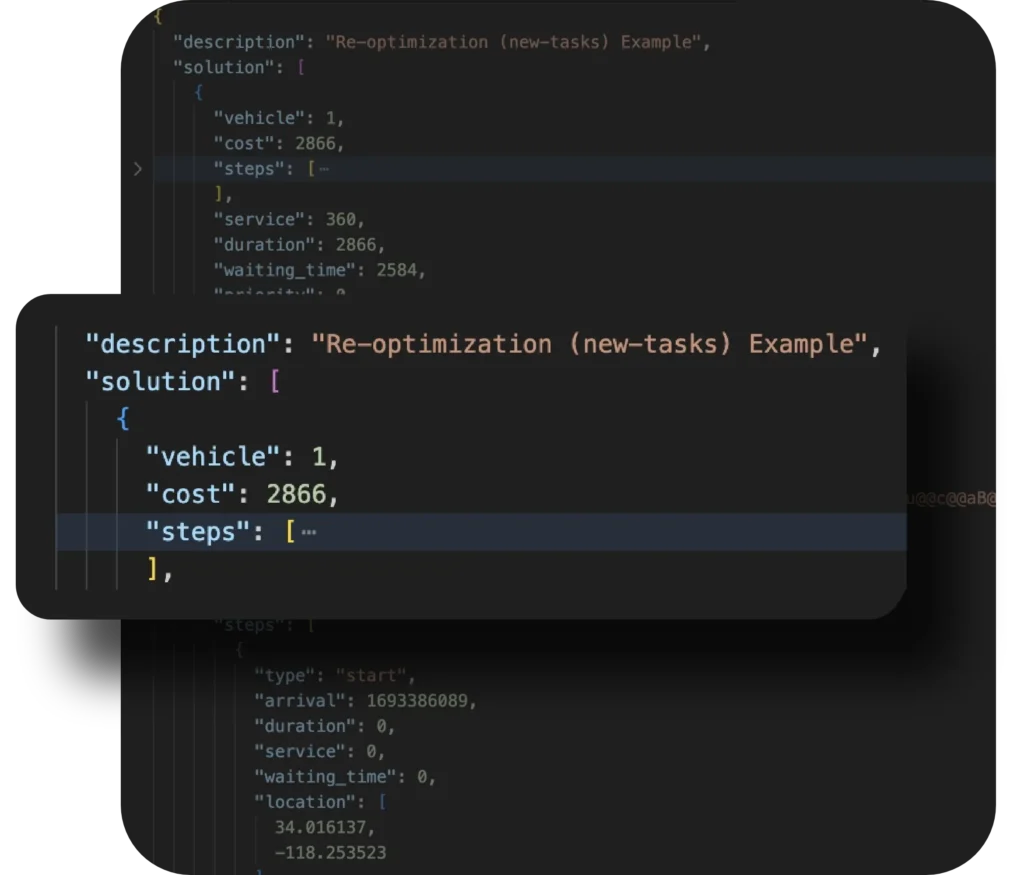
How it’s used?
If a new job comes in, you can send your optimized solution again to the optimization engine and re-optimize the new task.
The system recalculates the routes to integrate these changes by making minimal changes to the existing solution without compromising efficiency.
Users can easily manage unexpected scenarios and ensure that all deliveries are completed on time.
Why is this important?
In the dynamic world of delivery operations, changes are inevitable. Dynamic Reoptimization ensures that these changes are managed seamlessly, preventing disruptions in the delivery schedule.
This capability is essential for maintaining high service levels and customer satisfaction, as it allows businesses to handle unexpected situations proactively.
Feature 3: Intelligent Clustering and Zoning
Intelligent Clustering and Zoning enhance delivery zone planning by grouping jobs based on various factors to optimize delivery routes.
How it’s used?
This feature considers factors such as driving distances, traffic patterns, highways and flyovers, drivers’ location preferences, and overlapping routes to create efficient delivery zones.
It clusters jobs intelligently, ensuring that each delivery route is optimized for minimal travel time and maximum efficiency.
Why is this important?
Effective zoning and clustering of delivery jobs lead to significant improvements in operational efficiency. By reducing travel distances and considering traffic patterns, businesses can minimize fuel costs and delivery times.
This feature also helps in balancing the workload among drivers, preventing burnout, and ensuring timely deliveries.
Feature 4: Live Tracking and Delivery Alerts
Live Tracking and Delivery Alerts provide real-time monitoring of delivery operations and keep customers informed about their order status through alerts.
How it’s used?
This feature enables businesses to track their delivery vehicles in real-time, providing accurate ETAs. The system can send geofence-based alerts to customers, informing them about the status of their deliveries and any potential delays.
Businesses can monitor the progress of each delivery and make adjustments as needed.
Why is this important?
Transparency and communication are key to a positive delivery experience. Live Tracking allows businesses to monitor their operations closely, ensuring that everything runs smoothly.
Delivery Alerts keep customers informed, reducing anxiety and enhancing satisfaction. This feature also helps prevent missed deliveries by notifying customers in advance, thereby improving the overall efficiency and reliability of the delivery service.
NextBillion.ai also has a Driver App to manage and track all your deliveries.
NextBillion.ai is the right choice if:
✅ Ease of Use: You prioritize user-friendly software that can be quickly adopted by your team. NextBillion.ai stands out for its intuitive interface and ease of implementation.
✅ Route Optimization: You need advanced route optimization capabilities. NextBillion.ai excels in efficiently planning and optimizing routes, ensuring timely and cost-effective deliveries.
✅ Fast Performance: You value fast and reliable software performance. NextBillion.ai delivers swift processing and response times, enhancing your overall operational efficiency.
NextBillion.ai is not the best choice if:
❌ Cost-Effectiveness for Small-Scale Operations: You run a small-scale operation. The costs associated with NextBillion.ai may not justify its use for smaller businesses with limited logistics needs.
❌ Limited Starter Plan: You need support for multiple transportation modes. NextBillion.ai’s starter plan supports only car mode, which may not be sufficient for diverse delivery requirements.
Onfleet Features
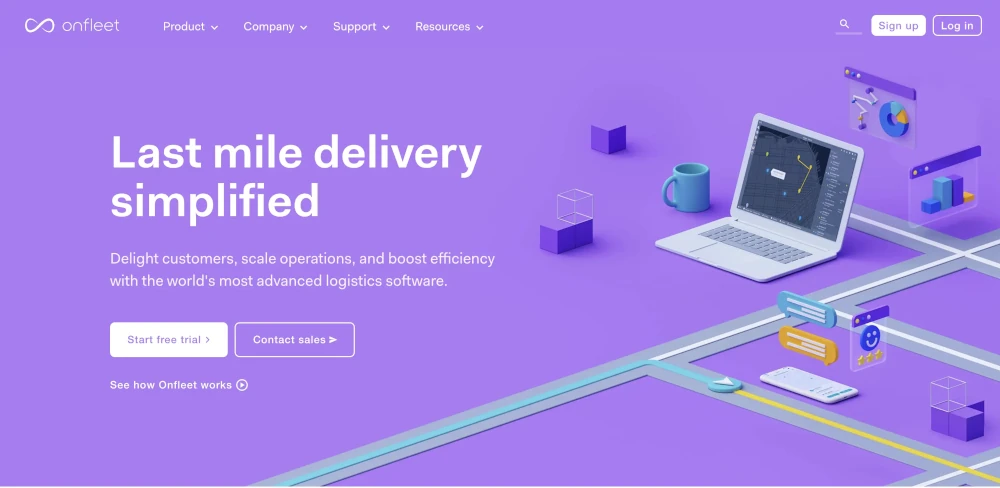
Onfleet is an advanced delivery management platform that simplifies logistics for businesses of all sorts. It offers a range of robust features that ensure delivery operations are efficient and dependable.
Some of the key features are:
Routing Capabilities
Onfleet allows for efficient route assignment, advanced scheduling to ensure timely operations, accurate estimated times of arrival (ETA) for deliveries, and optimization to reduce delivery times and fuel costs.
Real-Time Tracking
Real-time tracking capabilities include detailed vehicle management, real-time vehicle tracking, driver management to monitor and manage driver performance, and driver tracking to keep an eye on their real-time locations and statuses.
Deliveries
Onfleet provides accurate ETAs to keep customers informed, captures photo and signature proofs of delivery, ensures deliveries are made via the most efficient routes through route optimization, and allows for continuous monitoring of vehicle movements and driver tracking. Additionally, it offers alert notifications for various delivery statuses and ETAs.
Analytics and Reporting
The platform also excels in analytics and performance, providing real-time analytics to gain insights into delivery performance, performance monitoring to track and analyze key metrics, and access to up to a year of historical delivery data in the Scale edition.
Onfleet is the right choice if:
✅You are looking for an easy-to-use UI tool.
✅You need detailed monitoring of driver activities.
✅ You want up-to-date tracking of deliveries and vehicles.
Onfleet is not the best choice if:
❌You need highly customizable software.
❌ There might be some technical issues and inaccuracies with tracking and mapping capabilities.
❌You want software with an advanced routing algorithm.
Bringg Features
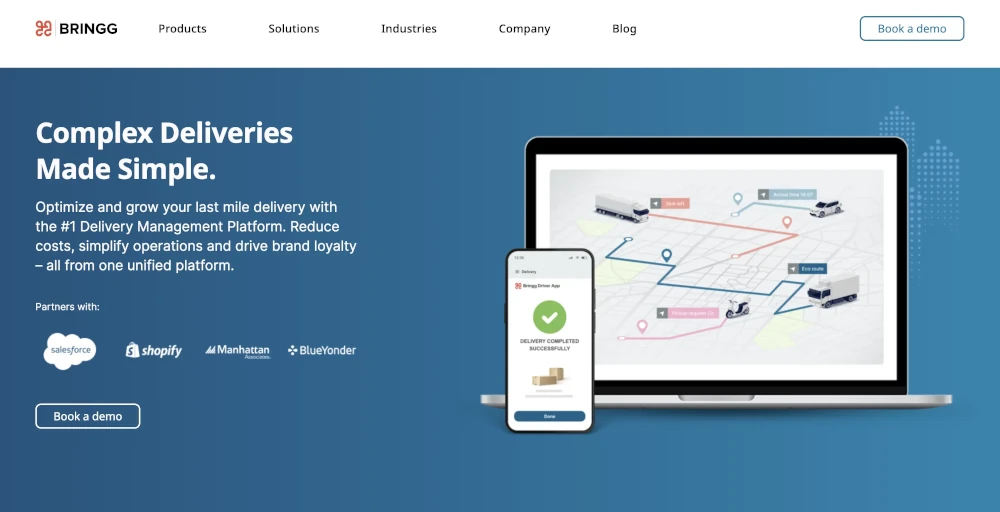
Bringg is a leading logistics software platform designed to streamline and optimize the end-to-end delivery process for businesses. With its global presence and extensive carrier network, Bringg supports a wide range of delivery needs, from standard deliveries to on-demand services.
1. End-to-End Supply Chain Management
Bringg offers a robust solution for companies with complex logistics operations spread across multiple locations. Its end-to-end supply chain management capabilities allow businesses to seamlessly manage everything from warehousing to final delivery.
Bringg also supports reverse logistics, enabling companies to efficiently handle returns and exchanges, a feature that sets it apart from many competitors like Onfleet and Routific. This comprehensive approach makes Bringg ideal for large brands with intricate logistics needs.
2. Salesforce Integration
Known as Zenkraft or Bringg on Salesforce, this feature integrates order management with delivery management within the Salesforce platform. For organizations already using Salesforce, this integration provides a seamless experience, connecting sales and delivery operations.
It enhances efficiency by ensuring that all delivery-related data and processes are synchronized with the Salesforce CRM, allowing for better visibility and management of orders and deliveries.
3. Third-Party Carrier Network
Bringg’s Delivery Hub product boasts partnerships with over 250 carriers, including major names like FedEx, Uber, DHL, UPS, Aramex, DoorDash, and Deliveroo. This extensive network allows businesses to leverage a wide range of delivery options and ensures a broad geographical reach.
Whether it’s standard delivery or on-demand services, Bringg’s carrier network offers flexibility and reliability, making it easier for companies to meet diverse delivery requirements and improve customer satisfaction.
Bringg is the right choice if:
✅ Your organization is already committed to Salesforce. The Zenkraft (Bringg on Salesforce) integration seamlessly connects order management with delivery management.
✅ You require a robust third-party carrier network. Bringg’s Delivery Hub partners with over 250 carriers, including FedEx, Uber, DHL, UPS, Aramex, DoorDash, and Deliveroo, providing a global reach.
✅ You manage both in-house deliveries and outsourced 3PL. Bringg’s ROAD product covers standard last-mile delivery features, and the auto-dispatch feature supports on-demand delivery.
Bringg is not the best choice if you:
❌You seek a user-friendly solution. Bringg’s broad scope and complexity require extensive training and may need external consultant support for implementation.
❌ Budget transparency is important. Bringg’s custom pricing lacks public information, and feedback indicates it can be expensive.
❌ Efficient route optimization is a priority. Bringg’s route optimization capabilities are mediocre, which can undermine efficiency gains.
Onfleet vs. Bringg vs. NextBillion.ai Supported Integrations
NextBillion.ai Integrations
Since NextBillion.ai is an API-first software, our solutions can easily be integrated into your workflow. We are also listed on some of the top marketplaces like GCP, AWS, Azure, Samsara, Motive, etc.
NextBillion.ai has cross-functional integration capabilities across Telematics, ERP and cloud services. Some of them are listed below:
If you are looking to integrate NextBillion.ai’s capabilities to another service apart from the above-mentioned list. Contact us to learn more.
Onfleet Integrations
Onfleet offers an integration marketplace to boost its delivery management platform. Here’s an overview of the existing Onfleet integrations:
Native Integrations
Onfleet’s Native Integrations are built to work perfectly with the platform, adding useful features:
- Square: Manage payments easily and securely.
- AeroPay: Streamline transactions and simplify payment collection.
- Delivery Manifest: Optimize delivery routes and schedules for timely deliveries.
Third-Party Integrations
Onfleet also integrates with third-party platforms like Shopify, Square, Azuga, etc., allowing businesses to automate workflows and connect with other apps.
Bringg Integrations
Bringg integrates with over 200 carriers globally, enabling businesses to offer diverse delivery options through internal drivers, external providers, 3PL carriers, crowdsourced fleets, and independent gig drivers. Notable carriers include FedEx, Uber, DHL, Stuart, and Frayt.
Bringg partners with leading tech companies to provide innovative, tailored solutions. Their alliances with Salesforce, Blue Yonder, Manhattan Associates, and Shopify leverage Bringg’s Delivery Management Platform to drive last-mile innovation and client success.
Wrapping Up Integrations
When comparing Onfleet, Bringg, and NextBillion.ai, each platform offers unique integration capabilities that cater to different business needs. While Onfleet and Bringg offer strong integration capabilities in delivery management and logistics, NextBillion.ai stands out due to its API-first design, which ensures seamless integration into diverse workflows and systems.
NextBillion.ai’s presence on major cloud marketplaces like GCP, AWS, and Azure provides businesses with a flexible and scalable solution. Furthermore, the ability to integrate with a wide array of platforms, including telematics and ERP systems, makes NextBillion.ai a versatile choice for businesses looking to enhance their operational efficiency across multiple domains.
NextBillion.ai Pricing
NextBillion.ai offers flexible pricing plans tailored to meet the needs of businesses of all sizes and operational requirements. Here are the available tiers:
Starter Plan:
Ideal for small businesses and startups, the Starter Plan provides essential APIs and car support at an affordable price. Key features include:
- Directions & Distance Matrix
- Route Optimization Fast
- Live Tracking API & SDK
- Geofencing
- Email support and community resources
Premium Plan:
For growing businesses needing advanced features, the Premium Plan builds on the Starter Plan and includes support for trucks and motorcycles. Key features include:
- Route Optimization Flexible
- Truck Routing & Navigation
- Navigation API & SDK
- Isochrones & Clustering
- Premium support for prompt assistance
Enterprise Plan:
Tailored for large-scale enterprises with complex needs, the Enterprise Plan offers a comprehensive suite of solutions. Key features include:
- AI-powered ETAs
- Road Editor
- Custom Map Data
- Custom Vehicle Profiles
- Dedicated Solutions Engineer
- White Glove Onboarding Support
Each plan is designed to provide the necessary tools and support for efficient and effective route optimization and logistics management.
Pricing Models:
NextBillion.ai offers three flexible pricing models to suit various business needs:
- Pay per asset
- Pay per order
- Pay per API call
Customers can choose the pricing model that best fits their operational requirements and budget.
Onfleet Pricing
Onfleet offers tailored pricing plans designed to cater to businesses of all sizes and stages of growth. Here’s an overview of their offerings:
Launch Plan: Starting at $550/month, it is ideal for new and small teams. This plan includes essentials like route optimization, photo & signature proof of delivery, and supports 2,000 delivery or pickup tasks with unlimited users.
Scale Plan: Priced from $1,265/month, the Scale Plan is suited for growing delivery operations. It expands on the Launch Plan with features such as barcode scanning, advanced ETA notifications, and supports 5,000 tasks, along with customizable task completion options.
Enterprise Plan: Custom pricing is available for the Enterprise Plan, tailored for established delivery operations. It offers advanced route optimization, multi-brand support, enterprise single sign-on (SSO), and includes premium features.
Bringg Pricing
Bringg does not publicly disclose its pricing information. You need to contact Bringg directly for detailed pricing and to understand the costs associated with its services.
What are Customers Saying?
Now that we have covered all the aspects of each platform let’s examine what customers have to say about their experience with them.
NextBillion.ai
With a rating of 4.7 out of 5 stars based on 56 reviews, NextBillion.ai is praised for its wide range of services and cost-effectiveness.
Customers highlight that NextBillion.ai’s APIs are rich in features, particularly in solving location tech challenges such as distance calculation, advanced routing, and ETA predictions. The platform is noted for providing accurate road distances and enhancing operational efficiency with precise ETAs.
NextBillion.ai is credited for solving complex logistics problems, making it easier for businesses to optimize routes and ensure accurate pickup and delivery schedules. This capability significantly benefits users by improving the efficiency and reliability of their transportation operations.
Onfleet
With a rating of 4.6 out of 5 stars based on 121 reviews, Onfleet is appreciated for its U.S.-based support, effective driver job board, and reliable notification system.
Users highlight Onfleet as one of the best software solutions for tracking drivers and efficiently delivering products to customers.
However, some users express concerns about pricing structures, limited discounts for non-profits, and challenges with support ticket resolutions.
Bringg
With a rating of 4.6 out of 5 stars based on 14 reviews, Bringg is widely recommended for its robust features and integration capabilities.
Customers appreciate Bringg for being flexible and customizable, allowing businesses to tailor the platform to their specific needs.
While praised for its functionality, some users express concerns about Bringg’s cost, complexity, occasional technical issues, integration challenges, and customer support responsiveness. These factors can pose challenges, particularly during implementation and ongoing use.
Wrapping Up
Choosing between Onfleet, Bringg, and NextBillion.ai depends on your specific business needs and priorities.
While all three platforms offer unique strengths, NextBillion.ai stands out for its adaptability and cost-effectiveness in meeting diverse business needs. Evaluate your specific requirements carefully to determine which platform aligns best with your operational goals and growth strategies in 2025.

